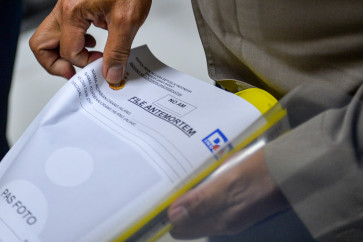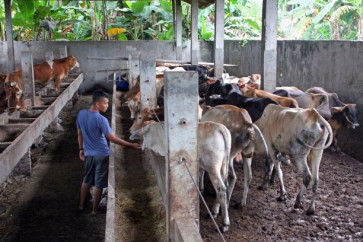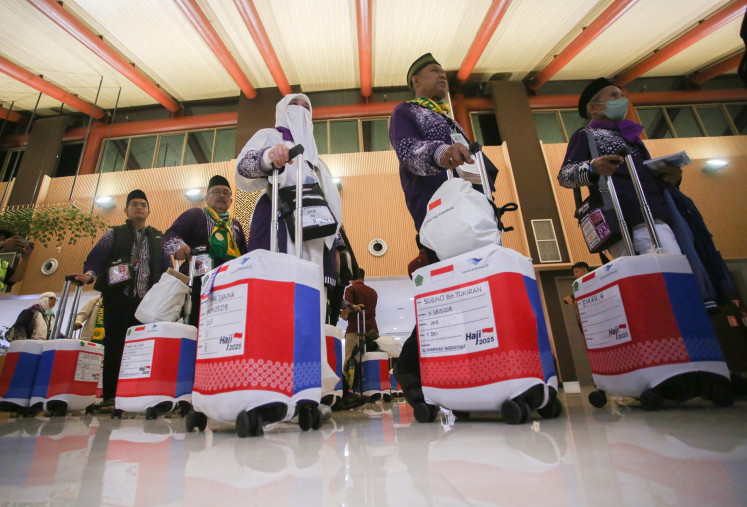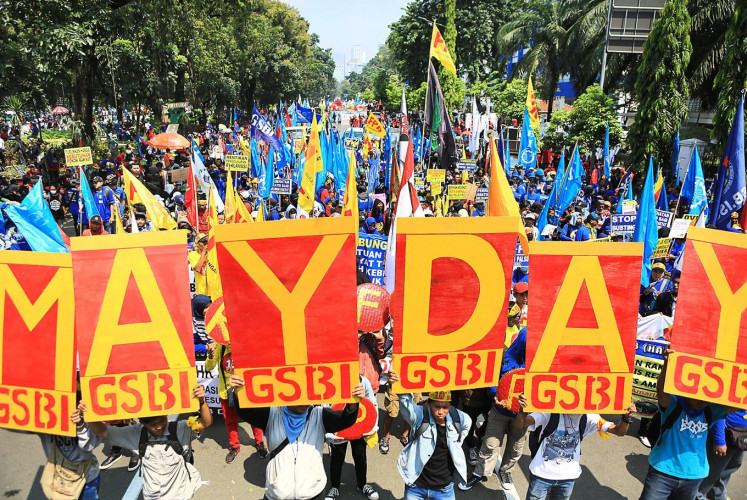Garuda looks to plug holes in eastern routes as CRJ-1000s returned
Change text size
Gift Premium Articles
to Anyone
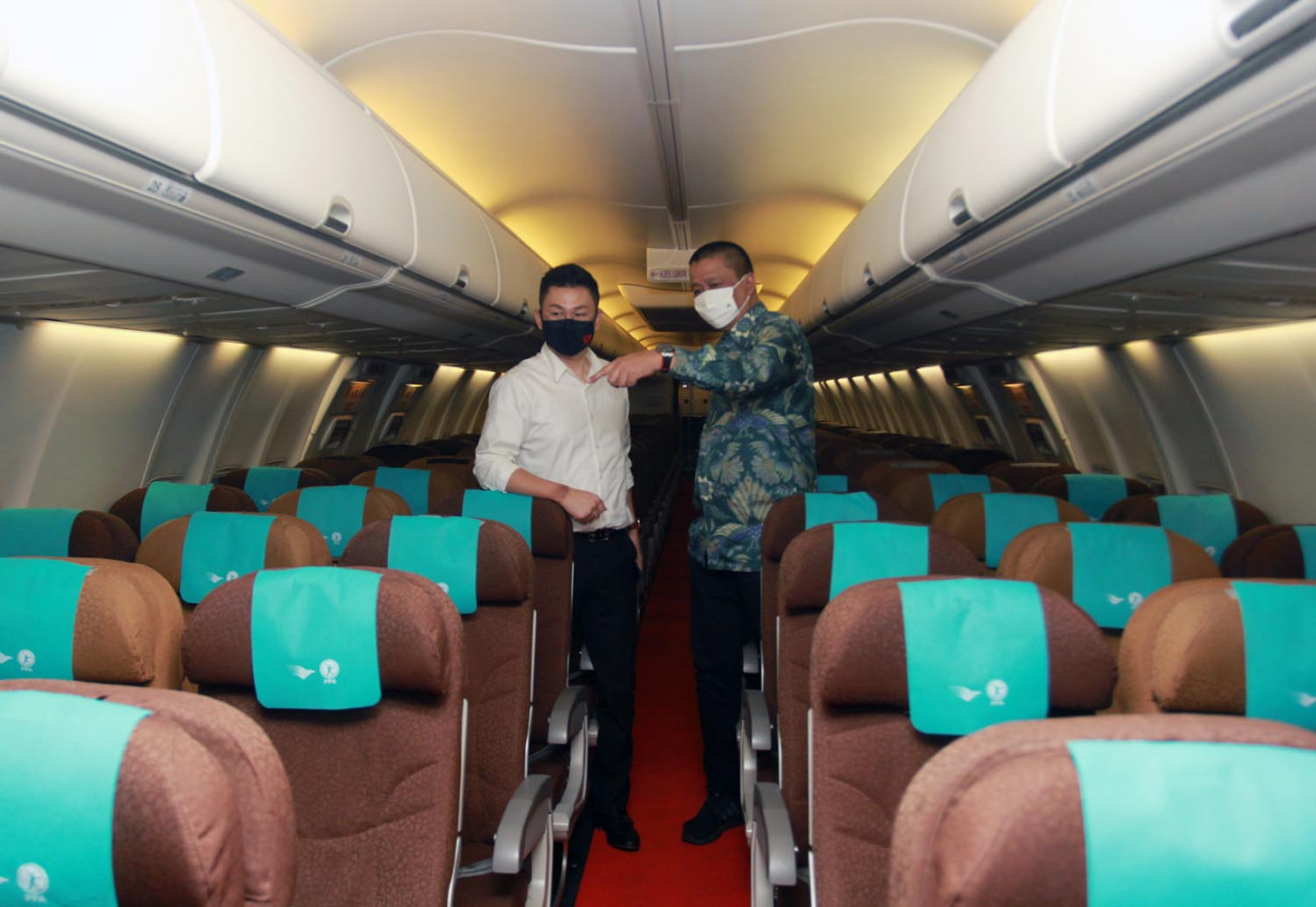
T
he government is on the hunt for substitute aircraft to accommodate flight routes in the east Indonesian region, following Garuda Indonesia’s decision to return 18 Bombardier CRJ-1000 fleets to their lessor.
Garuda previously used various types of aircraft to cover domestic routes in the eastern part of the archipelago. However, the Transportation Ministry stated that other airlines were also welcome to maintain connectivity in the region.
Besides the national-flag carrier, Sriwijaya Group and Lion Group also serve eastern routes, whether via direct flights or transit.
As for the aircraft types to cover the region, the ministry said it depended on the capacity of the airports run by the scheduled commercial air transportation business entity.
Acting director general of civil aviation of the Transportation Ministry Nur Isnin noted connectivity in the eastern part of Indonesia could still be maintained by airlines’ synergy.
Therefore, he added, even if Garuda returns the Bombardier fleet to the lessor, other carriers could still substitute.
“With the return of Garuda’s CRJ aircraft, flight routes that were previously served using [Garuda’s] CRJs can still be served with other types of aircraft, namely the ATR, A320 and even B737,” he said on Monday.
He, however, admitted a shortage in domestic aircraft availability had caused the closure of several eastern Indonesia routes.
“We are working with other airlines to quickly increase the number of aircraft to better serve the needs of aviation-service users in order to support economic activities like logistics, business, tourism and others,” he explained.
In an official statement released earlier this month, Garuda announced it had returned two Bombardier CRJ-1000s to its Montreal, Canada-based lessor as an initial phase of its fleet-restructuring plan. The company aimed to return 18 Bombardier planes in total.
Garuda’s president director, Irfan Setiaputra, explained the action was taken following the finalization of the homologation decision on the suspension of debt-payment obligations (PKPU) as well as the company’s strategic plans to accelerate its performance recovery.
He added that the action was also a follow-up to an agreement signed with Nordic Aviation Capital (NAC) -- the Bombardier CRJ-1000 lessor -- and Export Development Canada (EDC).
“The return of the fleet was part of Garuda Indonesia’s transformative steps to solidify our operational fundamentals by optimizing fleet utilization and adjusting production equipment, including aircraft specifications that are tailored to market segmentation and characteristics.”
He also stated that on July 19 this year, Garuda had returned its only Boeing 737 Max-8 with registered number PK-GDA to its lessor Becomm Leasing in Holland.
In the long run, Irfan said, Garuda’s restructuring plans would also be optimized by mutual agreements with lessors regarding changes or extensions of lease contacts, such as the implementation of a “power-by-the-hour” scheme for the payment of aircraft-rental fees, in which the company would pay rental fees based on flight hours.
“This is also in line with our commitment to be more careful and prudent in developing performance-expansion steps based on the need for more measurable production equipment and prioritizing cost-leadership bases in every process.”
Through such strategic steps, Irfan claimed Garuda managed to reduce rental costs for narrow-body aircraft to around 30 percent and wide-body aircraft to around 69 percent.
In the future, Garuda will also continue to evaluate its operating routes by adjusting the type of fleet based on the level of passenger occupancy through the use of wide-body fleets for routes that contribute positively to the company’s revenue.
“To provide various alternative international-flight destinations for service users, Garuda will optimize synergies with other airlines via interline and code-share schemes,” Irfan said.
Garuda previously used various types of aircraft to cover domestic routes in the eastern part of Indonesia. However, the Transportation Ministry stated other airlines are also welcomed to maintain connectivity in the region.

